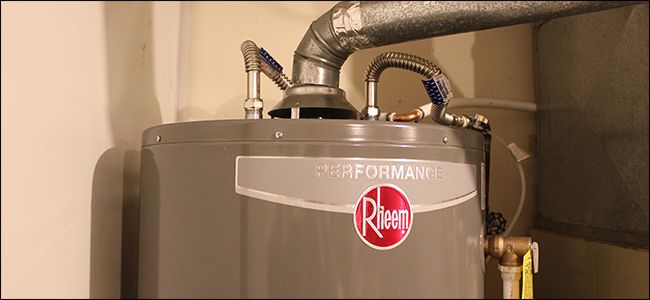Maintaining Your Home's Hot Water System: Key Tips
Maintaining Your Home's Hot Water System: Key Tips
Blog Article
The author is making a number of good points related to What Kind of Maintenance Do Water Heaters Need? in general in the content which follows.

Warm water is necessary for daily comfort, whether it's for a rejuvenating shower or washing dishes. To guarantee your hot water system runs efficiently and lasts longer, normal maintenance is vital. This post offers practical pointers and understandings on exactly how to maintain your home's warm water system to prevent disruptions and expensive repair work.
Intro
Keeping your home's hot water system could seem difficult, however with a few simple steps, you can guarantee it operates efficiently for many years ahead. This guide covers everything from comprehending your warm water system to do it yourself upkeep pointers and understanding when to hire professional assistance.
Value of Keeping Your Warm Water System
Regular maintenance not only expands the lifespan of your warm water system yet likewise guarantees it operates successfully. Overlooking upkeep can cause lowered effectiveness, greater energy expenses, and also premature failure of the system.
Indicators Your Hot Water System Demands Upkeep
Understanding when your warm water system needs interest can stop significant issues. Watch out for signs such as irregular water temperature, odd noises from the heating system, or rusty water.
Comprehending Your Warm Water System
Prior to diving right into maintenance tasks, it's helpful to comprehend the standard parts of your hot water system. Usually, this consists of the hot water heater itself, pipes, anode poles, and temperature level controls.
Monthly Maintenance Tasks
Regular regular monthly checks can assist capture small issues before they intensify.
Purging the Hot Water Heater
Purging your hot water heater gets rid of sediment buildup, enhancing effectiveness and extending its life.
Monitoring and Changing Anode Rods
Anode poles protect against corrosion inside the tank. Examining and replacing them when worn is vital.
Evaluating and Readjusting Temperature Level Settings
Adjusting the temperature settings ensures optimal performance and safety.
DIY Tips for Maintenance
You can perform a number of maintenance tasks on your own to maintain your warm water system in leading problem.
Looking for Leakages
On a regular basis check pipelines and connections for leaks, as these can cause water damages and higher bills.
Testing Pressure Alleviation Valves
Checking the stress safety valve ensures it operates properly and avoids excessive pressure build-up.
Shielding Pipes
Shielding warm water pipes decreases heat loss and can conserve power.
When to Call an Expert
While DIY maintenance is beneficial, some issues call for expert know-how.
Complicated Problems Calling For Specialist Assistance
Examples consist of major leaks, electric issues, or if your water heater is continually underperforming.
Regular Professional Upkeep Perks
Professional upkeep can consist of thorough inspections, tune-ups, and making certain compliance with safety criteria.
Conclusion
Normal maintenance of your home's warm water system is vital for efficiency, long life, and cost financial savings. By complying with these pointers and recognizing when to seek specialist help, you can make certain a reputable supply of hot water without unforeseen disturbances.
How to Maintain an Instant Hot Water Heater
Before tinkering with your hot water heater, make sure that it’s not powered on. You also have to turn off the main circuit breaker and shut off the main gas line to prevent accidents. Also turn off the water valves connected to your unit to prevent water from flowing into and out of the appliance. 2. When you’re done, you have to detach the purge valves’ caps. These look like the letter “T†and are situated on either side of the water valves. Doing so will release any pressure that has accumulated inside the valves while at the same time avoid hot water from shooting out and burning your skin. 3. When the purge valves’ caps are removed, you have to connect your hosing lines to the valves. Your unit should have come with three hoses but if it didn’t, you can purchase these things from any hardware or home repair shops. You can also get them from retail stores that sell water heating systems. Read the user’s manual and follow it to complete this task properly. When the hosing lines are connected, open the purge port’s valves. 4. You should never use harsh chemical cleaners or solutions when cleaning your unit. Make use of white vinegar instead. It should be undiluted and you’ll probably use about 2 gallons. 5. Now flush your water heater. This task should probably take about 40 minutes. We can’t give you specific directions for this because the procedure is carried out depending on the type, model and brand of your heater. With that being said, refer to the user’s manual. 6. When you’re done draining the unit, you have to turn off the purge port valves again. Remove the hosing lines that you earlier installed on each of the water valves. Put the valve caps (purge port) back in their respective places and be very careful so as not to damage the rubber discs that are found inside these caps. 7. Now that everything’s back in place, check your user’s manual again to find out how to reactivate your water heating system. 8. Once it is working, turn one of your hot water faucets on just to let air pass through the heater’s water supply pipes. Leave the tap on until water flows smoothly out of it. https://www.orrplumbing.com/blog/2014/september/how-to-maintain-an-instant-hot-water-heater/

I was introduced to that write-up on How to Maintain a Hot Water Heater in a Few Simple Steps from a buddy on a different web page. Are you aware of somebody else who is interested in the subject? Do not hesitate to share it. Thank you for your time. Come back soon.
Further Details Report this page